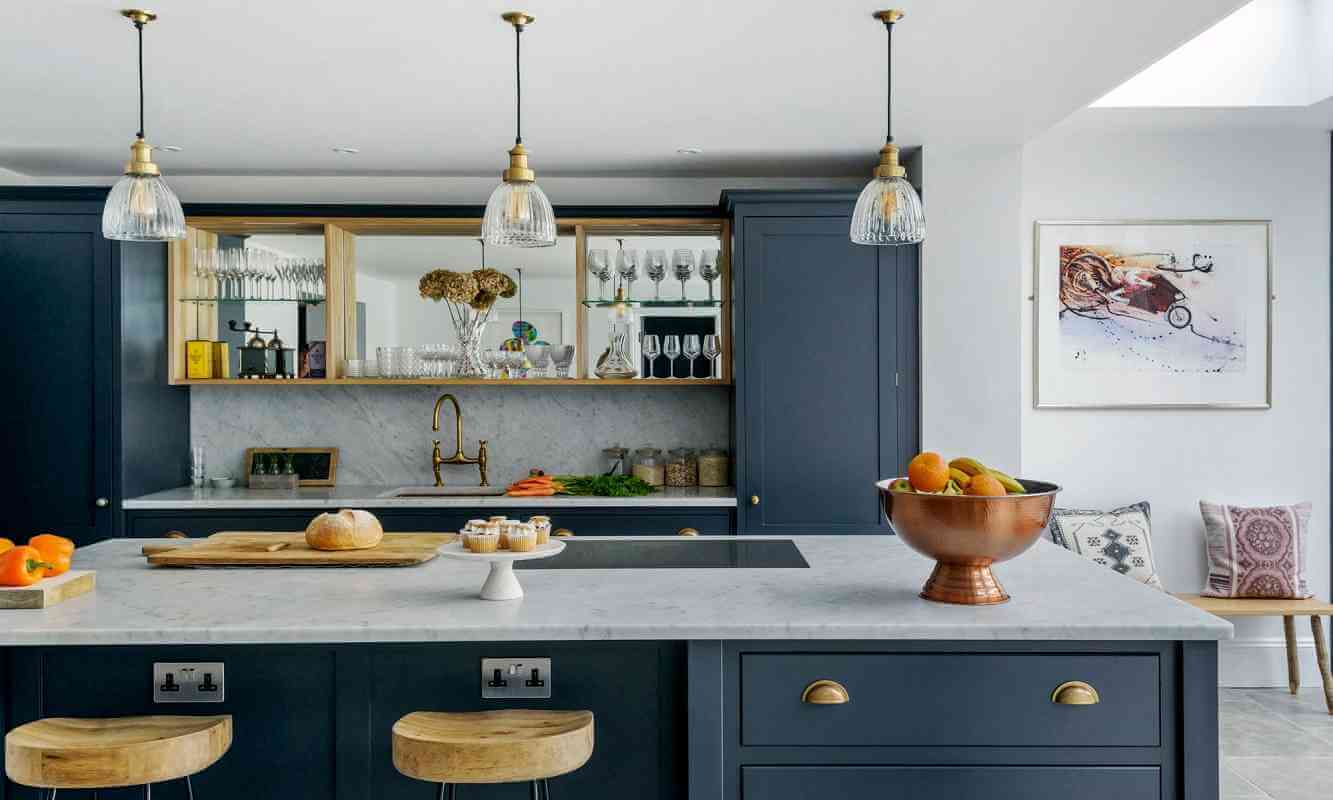Choosing the paint colors for a new house is a fun part of the planning process. In contemporary kitchen design, choosing the perfect colors for your cabinets may do more than make your area appear nicer to the eye. Many folks aren't sure whether they should go with dark or light cabinetry. The color you choose should keep the feeling of coziness while also improving the aesthetics and, of course, the desired result.
Here are some considerations to remember when picking between light and dark cabinets:
Make a Contrast
Decorating with white can create a terrific background for vivid colors on cabinets, and because kitchens are used often, they are a perfect location to test out new color schemes. Instead of always using the same hue, why not switch it up and go for a more vibrant and exciting palette?
The best way to make a scullery design stick out is to combine colors and finishes in unexpected ways, such as by selecting wall and floor-mounted cabinets in contrasting hues or selecting an island in a bright shade.
Select Contrasting Hues To Create A Striking Ensemble
High contrast styles, such as choosing dark cabinet ideas and light walls, are daring but may appear delightfully sophisticated. Painting cabinets a dark color is another excellent technique to anchor a big kitchen and bring the walls closer together.
Confidence is required to use jarring hue contrasts, but the ultimate result may be upscale. This may be accomplished in several ways: using a contrasting color for the walls and ceiling units above the floor cabinets. Combinations of dark grays, blues, or greens with white are beautiful.
So, if your kitchen is on the smaller side, don't be scared to incorporate color. A darker color scheme may have a dramatic visual impact even in a relatively small space.
Generate Harmony Using Identical Tones
While bold color schemes for walls and cabinets may attract the eye initially, a more restrained neutral color scheme may be the better long-term choice.
A kitchen is an investment, so choosing a layout and color palette that you'll be happy with for years is essential. Therefore, for an elegant result, go for a tonal effect by blending darker and lighter variations of the identical color. One color might be used for cabinets, while the other for backsplashes, trim, or even an island.
It is crucial to use complementary tones when designing with neutrals, regardless of whether your cabinets are brighter or darker than your walls.
Instead of focusing on brightness or darkness, it's crucial to consider tone. You probably don't want cream walls if your cabinets are grey.
Final Thoughts
In conclusion, the question of whether or not cabinets should be a brighter or darker shade than walls ultimately rests on the overall color scheme and desired effect.
Lighter cabinets and dark walls, or dark cabinets and light walls, are two options for creating visual contrast.
Another option is to play it safe by using just a few tonal variations of a single hue to accomplish your goals.
